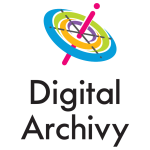“We put the Knowledge in Technology”
One of the most complicated elements in content management derives from the fact that each archive’s collection is different. This is due to the scale, scope, variety, and complexity of the archival collections. It also arises from the fact that there are a variety of contributing factors and specialized requirements. By leveraging our critical thinking and awareness of other successful archival systems, we put our professional knowledge into technology.
Regardless of the size and scope of a project, there are three key elements that require serious review and analysis. In fact, all archival solutions and best practice are influenced by three factors: People, Process and Technology. If you think of it like a Venn diagram, you’ll understand why we believe “Content lies at the intersection of people, process and technology.”
Professional archivists know that an awareness and understanding of archival standards helps define the deliverables and set reasonable goals. By focusing on the relevant elements and contingencies, archivists can help build a trusted digital archive that serves a variety of users and their needs. Solutions based on archival standards help connect relevant content to the specialized interests of its users.
Content Management and Archival Standards
The key component, obviously, is the content itself. As a result, it is critically important to observe people and analyze their processes carefully and non-judgmentally. Knowledge of archival standards, technical requirements and workflows make it easy to use the technology in ways that address the goals and objectives. More importantly, familiarity with other systems helps identify a Designated Community of stakeholders and super-users. This knowledge helps ensure that the technology used in the information ecosystem will deliver results that make assets accessible to the right people in the right format at the right time.
An information ecosystem is created by and dependent on its users, the software and the procedures. A clear understanding of goals and objectives allow archivists to leverage Technology, People and Processes in a way that sets up the institutional archive for success. A successful content management system is effective and efficient, and remains flexible enough for future growth and change. This creates a winning User Experience that ensures the archive is both useful and user-friendly.
Read MoreThe Story of Us (I = Information)
Most of what we learn about anything comes from outsiders and outside sources. Historians pore over archival primary sources and abandoned documents to examine how the dead truly lived. Memoirists and screenwriters, on the other hand, conjure up scenes from childhood to plot personal narratives of individuals. In both cases, information and archives are key to storytelling. Whether it’s fact-based or persuasive, resources can be used and interpreted to serve many needs.
Archives and Astrology
Archives are like astrology. Astrology is an interpretation.
It is layered onto a myth and then layered onto a logical system that is fully realized, but completely distinct, from the real world. Similarly, an archive is an interpretation layered onto an information architecture and content management system. Whether it has a fully realized taxonomy built from internal preferred terms or not, the system is a protects content and context.
Metadata schema standardizes data effectively. A trusted archival system provides a finding aid to assets that may be completely distinct, and then integrated within the real world.
Calculating I = Information
Information has many meanings as well. Some see it as an age and a commodity. Others like James Gleick are more precise and argued that it is A History, a Theory, a Flood. Gleick wrote an excellent and riveting book on it. Paired with Claude Shannon’s thesis, it’s perfect. Today information is everything. It also is a Cloud. In the age of cloud computing, information surrounds us virtually and in reality.
Information, however, is also an interpretation. Based on a theory of Borge Langefors, the Infological equation states that Information is a function of an interpretation of Data and Pre-Knowledge over time.
I love this equation. It clearly shows how Digital Archivy archivists can help improve your information. By focusing on the Data and the Knowledge of provenance (creators), functions, and objects, and then be establishing or defining the time frame, an institution will gain accurate and valuable information.
Based on knowledge of international standards and familiarity with functional requirements and best practice, it is possible to better interpret the resources in order to identify, protect and amplify the Information.
Applying Information Strategy
Developing a methodology or a tool to help with interpreting data is key. A strategy built upon three main resources will solve this problem:
- clearly identifying and defining data sets
- determining who owns and can share relevant pre-knowledge (provenance)
- tracking time restraints
There is an additional key element of this equation’s system. That is to identify clearly the algorithm used for interpretation. This may seem like a minor esoteric point, but in reality, this is the most important variable of all. Reasoned conclusions can be drawn if the data and pre-knowledge can be trusted Users can take control by sorting the search results by date, author, or title. The results may be the same, but the ordering and display of data may affect the content that is available.
Information is a flood and a cloud and much more. Data surrounded us at all times. Once you successfully identify the data sets and other elements, the component parts will work together to present the accurate information you need. If you need help managing or interpreting your information, please see our clients page.
Read More



